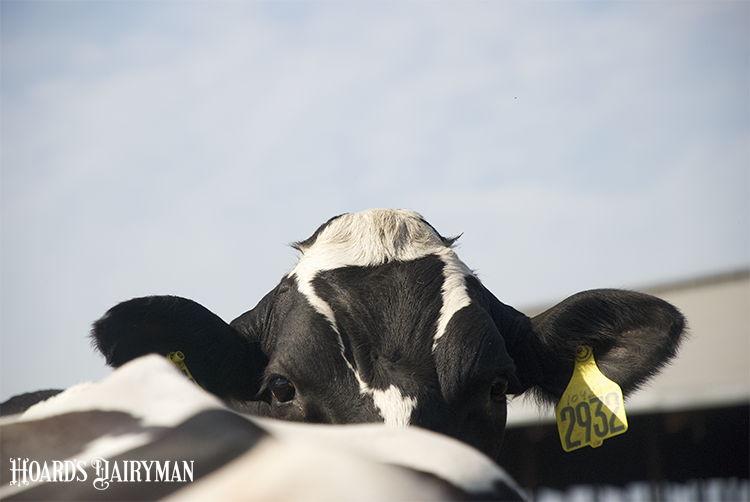
Certain signs of heat stress are relatively easy to notice by simply looking around the barn – rapid breathing or panting, cows bunching, and reduced feed intake, for instance. Other indicators may not be seen with the naked eye but can be quantified with data.
As you are looking for heat stress indicators in your own herd or in herds you work with, veterinarian Nigel Cook shared three production factors that signify cows are likely being impacted by hot weather.
“There are typically three things we are looking for in summer,” said Cook, a professor at the University of Wisconsin-Madison’s School of Veterinary Medicine, during a Dairyland Initiative “Assessing Adult Cow Barn Ventilation” workshop. “During heat stress, milk yield crashes, fertility crashes, and somatic cell count goes up.”
For milk yield, Cook said cows can normally hang on for a few days, but often they experience a “third day crash” when hot weather continues. The reduction of milk production can linger for a while before cows rebound.
The problem is that monthly production test data does not accurately capture the full impact of heat stress on milk yield. That’s because cows can experience a significant drop in milk output, but they start to recover once the heat dissipates, and a monthly test may completely miss this period of lower milk yield. Cook recommended the use of daily, individual cow milk weights when available.
With reproduction, heat stress can cause an immediate reduction in conception rate. Evaluating conception rate data over several years can illustrate if there is a trend in reproduction caused by heat stress.
The same would be beneficial for somatic cell count, which Cook said commonly rises in the summer. By looking at two years or more of data, seasonal changes in somatic cell count can be identified and if there is a pattern, steps to mitigate the impact of heat stress would be warranted.
As for health events, Cook said the consequences can be variable in timing. Mastitis, for example, can be somewhat immediate, he said.
Lameness, on the other hand, is delayed about two months. If heat stress occurs in July, peak lameness won’t happen until September, he said. That is because it takes about two months to grow the thickness of the sole, so any insult to the corium takes that long to get to the surface.
Then there are problems such as pneumonia, which Cook said can result from poor air quality, that may not surface until the winter. This is proof that the negative impacts of heat stress can last long after the dog days of summer end, and an investment in heat abatement strategies can pay off all year round. The first step is to determine if a farm has a heat stress problem, and that can be done by evaluating the metrics listed above.








